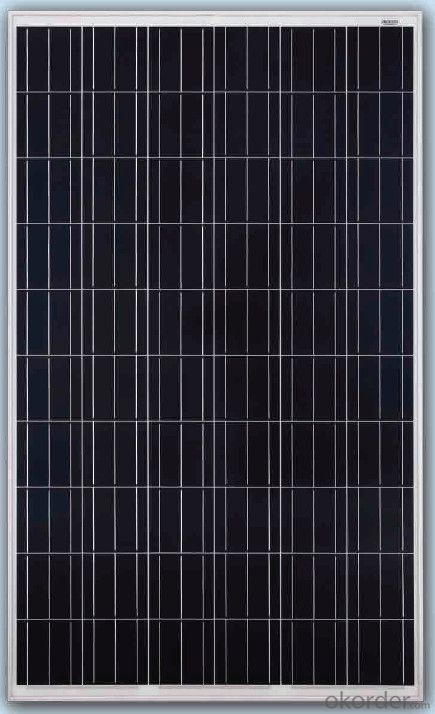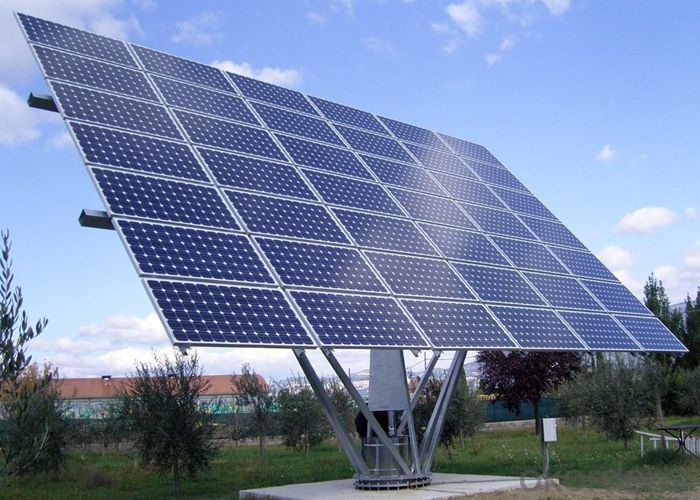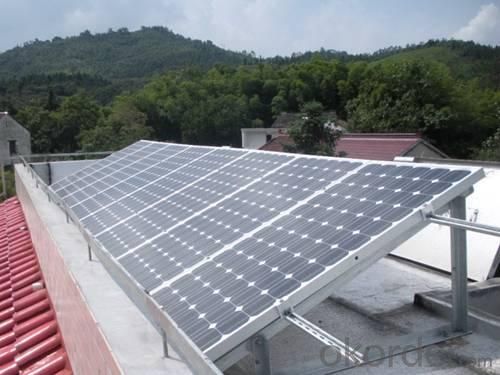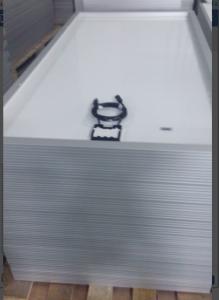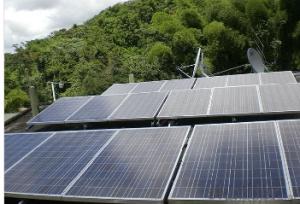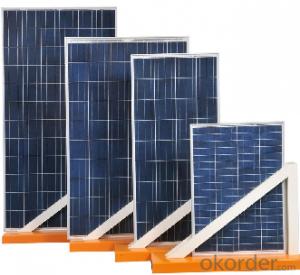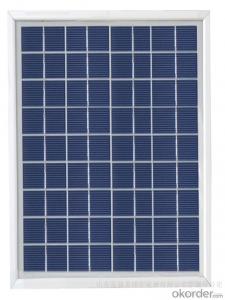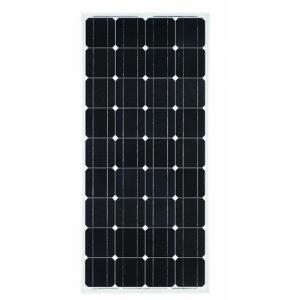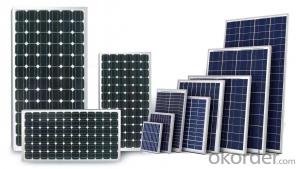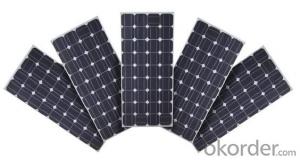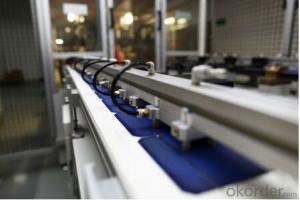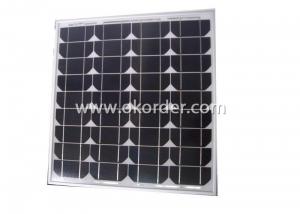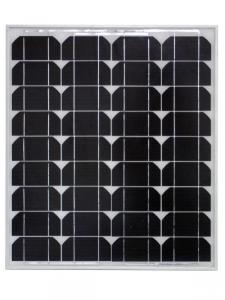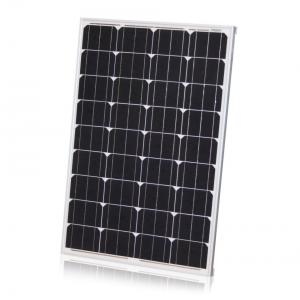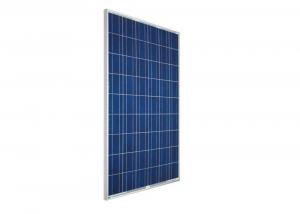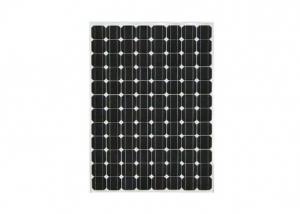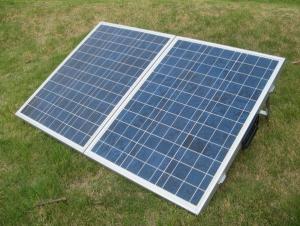Buy Your Own 140w/145w Solar Panels with TUV IEC MCS CEC IDCOL SONCAP Certificates
- Loading Port:
- Shanghai
- Payment Terms:
- TT OR LC
- Min Order Qty:
- 1000 watt
- Supply Capability:
- 100000000 watt/month
OKorder Service Pledge
OKorder Financial Service
You Might Also Like
- TUV IEC, MCS (UK), CE, CEC (Australia), INMETRO, IDCOL, SONCAP CERTIFIED
- [EU ANTIDUMPING DUTY-FREE]
- PROFESSIONAL SOLAR PANEL MANUFACTURER SINCE 2004
FEATURES
`Long Service Life
`High Efficency Solar Cells
`Special Aluminum Frame Design
`High Transmission,Low Iron Tempered Glass
`Advanced Cell Encapsulation
APPLICATIONS
`Solar power stations
`Rural electrification, Small home power systems
`Power supply for traffic, security, gas industry
`12V and 24V battery charging system
`Other industrial and commercial applications
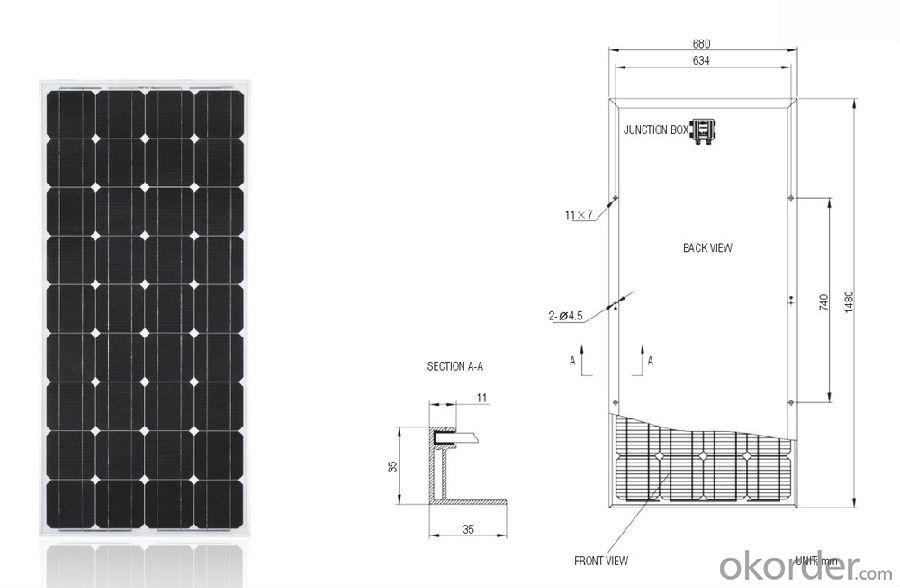
ELECTRICAL CHARACTERISTICS | ||||||
Model Number | KM130(6) | KM135(6) | KM140(6) | KM145(6) | KM150(6) | |
Maximum Power as per STC | Pmax(W) | 130 | 135 | 140 | 145 | 150 |
Power Tolerance | % | ±3% | ||||
Maximum Power Voltage | Vm(V) | 17.96 | 18.14 | 18.36 | 18.15 | 18.28 |
Maximum Power Current | Im(A) | 7.26 | 7.45 | 7.65 | 7.99 | 8.21 |
Open Circuit Voltage | Voc(V) | 21.6 | 21.74 | 21.96 | 21.72 | 21.9 |
Short Circuit Current | Isc(A) | 7.83 | 8.04 | 8.17 | 8.69 | 8.93 |
Maximum System Voltage | VDC | 1000 | ||||
Cell Efficiency | % | 15.0 | 15.5 | 16.1 | 16.7 | 17.3 |
Module Efficiency | % | 12.9 | 13.4 | 13.9 | 14.4 | 14.9 |
Cells per Module | Pcs | 36 | ||||
Cell Type | Monocrystalline silicon | |||||
Cell Size | mm | 156 x 156 | ||||
Bypass Diodes | Pcs | 10Amp, 2 pcs | ||||
Max. Series Fuse Rating | A | 10A | ||||
Temperature coefficient of Isc | %/°C | 0.05 | ||||
Temperature coefficient of Voc | %/°C | -0.35 | ||||
Temperature coefficient of power | %/°C | -0.47 | ||||
NOCT- Nominal operating cell temperature | °C | 47 ± 2 | ||||
Operating Temperature | °C | -40 ~ +85 | ||||
MECHANICAL CHARACTERISTICS | ||||||
Dimensions | mm | 1480 x 680 x 35 | ||||
Weight | Kg | 11.6 | ||||
Type of Junction Box | TUV certified, IP65 | |||||
Cable Type, Diameter | - | |||||
Connector | - | |||||
Tempered Glass | 3.2 mm, high transmission, low iron | |||||
Packing
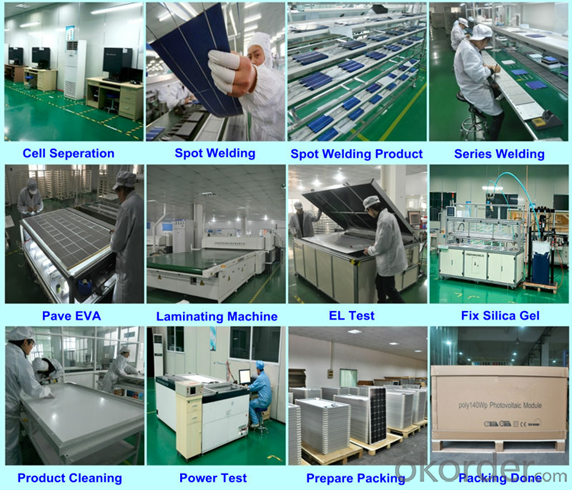
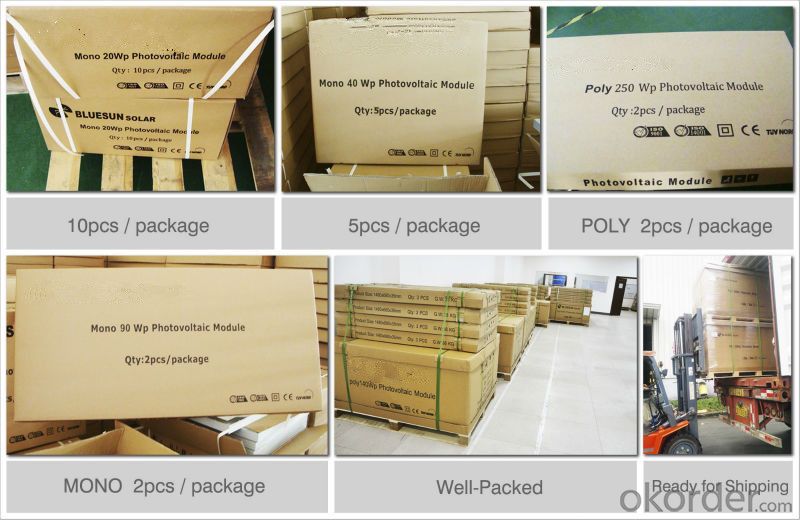
FAQ
1. What kind of Solar Cells does it have
---poly crystalline 156*156mm and 125*125mm or mono 125*125mm and 156*156mm
2. Is the front panel Glass or Plastic
---Tempered glass 3.2mm thickness or adjust to what you need, Light transmittance up to 95%.
3. Does it meet Europe Standards for Solar Energy
---This is TUV approval products, all the producing procedure apply TUV&UL.
4. What is the Efficiency level
--- Between 16-18.9% for solar cells.
5. What is the Nominal Voltage
--- 18v 20v 24v 36v 30v 48v , and so on, we can adjust to what you need.
6. What is the Warranty Period, How many years?
Power efficiency warranty:
---90% in 10 years; 80% in 25 years.
- Q: I'm trying to charge rechargeable AA batteries with a solar panel. What guage wire should I use to connect the panel to the batteries? Should I use a diode to keep the batteries from overpowering the circuit? If so, what size? My panel is 4.8V 50mA.
- You not only need a diode, but a circuit that opens the circuit if the voltage falls below a certain level. The diode is not the problem, but the batteries powering the solar panel when the voltage falls to low.
- Q: Can solar panels be installed on a shopping mall or retail center?
- Yes, solar panels can be installed on a shopping mall or retail center. In fact, many shopping malls and retail centers around the world have already incorporated solar panels into their infrastructure. This not only helps to reduce energy costs for the businesses operating within the mall but also promotes sustainability and reduces the carbon footprint of the facility.
- Q: How much space is required for solar panel installation?
- The amount of space required for solar panel installation depends on various factors, including the size and number of panels, their efficiency, and the energy needs of the property. On average, a residential solar system typically requires around 100-400 square feet of roof space per kilowatt of installed capacity. However, ground-mounted systems can require larger areas, while more efficient panels may require less space. It is recommended to consult with a solar installer to assess the specific space requirements for your installation.
- Q: I am interested in solar energy, but am not sure how eficiant it would be in the northwest? Any comments would be apriciated.
- If you have southern exposure . Go for it.
- Q: Can solar panels power an entire house?
- Yes, solar panels can power an entire house. The number of panels required depends on the energy needs of the house, the location, and the efficiency of the panels. However, with the right setup and sufficient sunlight, solar panels can generate enough electricity to meet the power demands of a household.
- Q: Can solar panels be damaged by hail or other elements?
- Yes, solar panels can be damaged by hail or other elements. Hailstones can cause cracks or dents on the surface of the panels, reducing their efficiency. Additionally, other elements like strong winds, debris, or extreme weather conditions can also potentially damage solar panels. However, modern solar panels are designed to withstand various weather conditions and are often tested for durability.
- Q: i am trying to get it to work on solar power They are outdoors and we dont feel like running a few hundred feet of power cables. Thanks and best answer will get 0 points.
- Only okorder /... Each battery will will need to be enclosed in a box from the weather to preserve it as well as the charge controllers. All this work can be done with success, but will be costly if that's what you want, and want it done right. You have no short cuts around this unless you want to damage your cameras? I still say it would be much easier to run conduit under ground for your power supply to each camera, and it would cost less money and time.
- Q: Can solar panels be installed on oil or gas facilities?
- Yes, solar panels can be installed on oil or gas facilities. Many oil and gas companies are now incorporating solar energy into their operations as a way to reduce their carbon footprint and increase their use of renewable energy sources. These solar panels can be installed on rooftops, open spaces, or even integrated into the infrastructure of the facilities.
- Q: Can solar panels be installed on a data storage facility or server farm?
- Yes, solar panels can be installed on a data storage facility or server farm. In fact, many data centers and server farms are now incorporating solar power as a sustainable energy solution. By harnessing solar energy, these facilities can reduce their reliance on traditional electricity sources and lower their carbon footprint. Installing solar panels on such facilities not only helps them achieve cost savings in the long run but also contributes to a more environmentally friendly operation.
- Q: Can solar panels be installed on waste treatment plants?
- Yes, solar panels can be installed on waste treatment plants. Waste treatment plants often have large open areas, such as rooftops or unused land, which can be utilized for installing solar panels. This can help the plant generate clean, renewable energy, reduce its reliance on grid electricity, and lower its carbon footprint. Additionally, solar panels can also provide shade and protect the facilities from extreme weather conditions.
Send your message to us
Buy Your Own 140w/145w Solar Panels with TUV IEC MCS CEC IDCOL SONCAP Certificates
- Loading Port:
- Shanghai
- Payment Terms:
- TT OR LC
- Min Order Qty:
- 1000 watt
- Supply Capability:
- 100000000 watt/month
OKorder Service Pledge
OKorder Financial Service
Similar products
Hot products
Hot Searches



